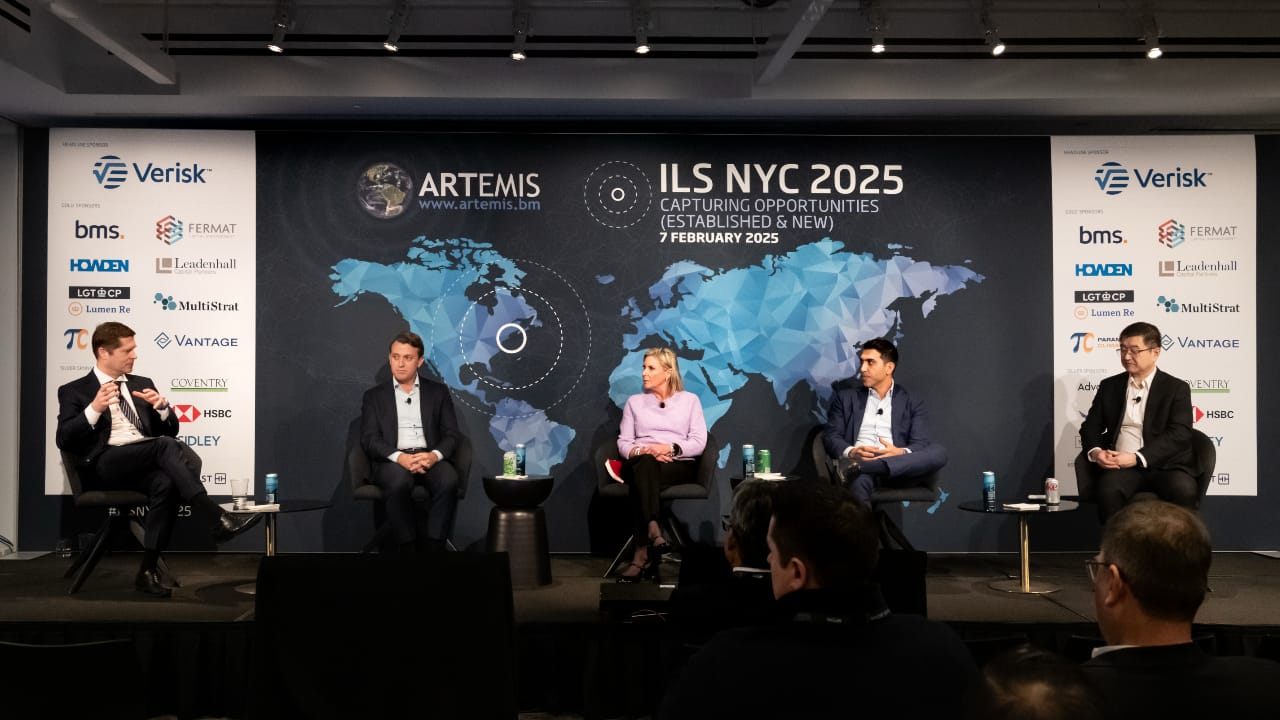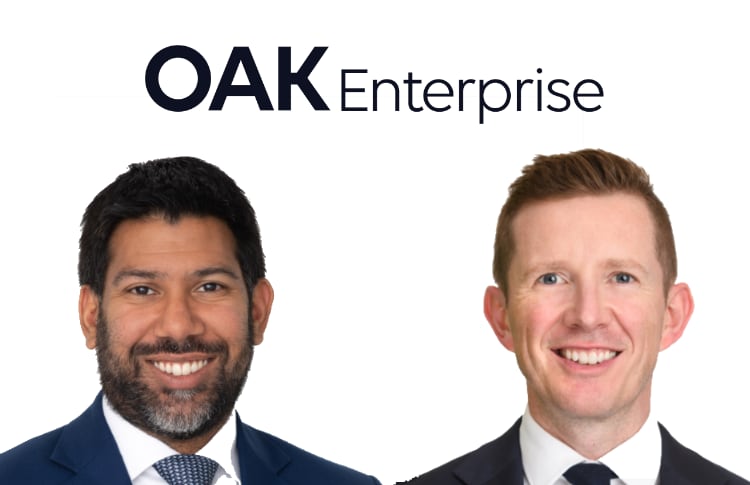
At Artemis’ ILS NYC 2025 conference, can better navigate capacity crunches, volatility, and communication gaps as it continues to grow at record pace.Moderated by Philipp Kusche, Global Head of ILS, Howden Capital Markets & Advisory, the session titled brought together Zhak Cohen, Managing Director, Gallatin Point Capital; Jennifer Montero, Chief Financial Officer, Citizens Property Insurance Corporation; Chin Liu, Director – Insurance Linked Securities, Fixed Income Solutions, Amundi US; and Peter Miller, Senior Vice President, Neuberger Berman.commenced with reflections on the performance of the catastrophe bond market in 2024 and 2023.Liu, kicked off the discussion: “We had a fantastic two years, 2023 and 2024, the best ever in the Swiss Re Cat Bond Index history.” “That delivers, I think messages and testimonies to both sides: to investors and to sponsors.
To investors, I think that’s a strong message, you know, this is a for-profit sector.There is long-term profit and long-term stable return in the asset class.And sometimes we’re saying this is almost like a self-healing asset class, because it’s must to have nature in the economic system, right, when we face losses.” He continued: “I think the message to the sponsors, the cedents, is that obviously capital is here for the long-term to support their business, but as we mentioned, we need to see profitability in the transactions.
And, you know either reinsurance capital or ILS capital is a solution for volatility, but we are not a solution for profitability.“The profitability has to be achieved through better rates, better premium, from the inward business.You can’t just simply say, let me just get rid of those non-profitable or money losing business to the investors.
That’s not going to last long.So I think we have to remember really the purpose and the function of the capital is really to help you in those really truly tail events, and not really help you on those random volatility or profit probability.” Despite booming issuance across 2024, .“I would echo Chin’s comments on obviously 2024 being a great year.
But just addressing the bit about the sort of mini cycle we saw last year, I think it’s really critical that we as a market get a little bit better about matching the pipeline and the capital,” Miller added.Miller continued: “Because obviously what happened last year is there’s this huge maturity wall in January, then no issuance for a month.Whether that was held back or on purpose, I don’t really know.
And then all of a sudden, the issuance came, and everybody started gorging themselves on additional notional.“And then we got to June, and there was no money to support extra issuance, so it’s not good from an investor’s perspective.Although they might like widening, I think long-term, it does damage, because I think it’s hard for sponsors to come to market if they can’t predict where the spreads are going to be.” “It takes time to put these deals together,” Kusche noted.
“And I think the challenge we’re obviously facing is sometimes there are strategic purchases, sometimes there are purchases also driven to a degree from the pricing environment, and also sometimes, yeah, it takes time put these deals together and matching that is obviously sometimes more challenging, but ongoing communication will hopefully help.” That tension played out clearly in 2024, according to Citizens CFO Montero, whose team entered the cat bond market later than expected in an effort to place a $2 billion deal.“So we did go a little bit later last year compared to the rest of the issuers that were out there.And we were trying to do a $2 billion deal, and we did get $1.1 billion, which was very successful, but the capital did run out.
The opportunistic investors left, the news said it was going to be the season from hell, and it was going to be the worst storm ever,” Montero explained.“So it was successful, because we were able to get a lot, and we do need both markets, both the traditional and the capital market, to get the capacity that we need.But we did come up short about a billion dollars.
So that was disappointing, but we’re gonna go back out this year and try to fill that gap.” In May 2025, Florida’s Citizens Property Insurance Corporation made a grand return to the catastrophe bond, as the company managed to price, securing a 56% upsized $1.525 billion of reinsurance from its new Everglades Re II Ltd.(Series 2025-1) issuance.Shortly after Citizens secured its latest cat bond, as it priced $1.55 billion of multi-peril protection via sponsorship of four Merna Re (Series 2025) cat bonds.
Going back to the panel, .“There is a competition for capacity, and to your point, there is that three to six months of lagging time.So you can’t just announce your deal three months or six months ahead of time, and then not doing it, right.
So you’re facing a lot of reputational damage.So I think unfortunately, that pipeline management is extremely critical.” Liu continued: “I think better communication would really facilitate a better long term execution.You may not achieve the absolute best execution for the sponsor for that year, but over the long-term, that’s reduced some of the volatility.” Finally, Cohen, representing Gallatin Point Capital described the company’s entry into ILS as a natural extension of their financial services mandate, where balance sheet risk is embraced, not avoided.
“What we didn’t fully appreciate, which is a good problem to have, was that the investments would do quite well.And because they did well and appreciated quickly in value, the natural catastrophe risk ended up being a larger part of our overall portfolio than we wanted it to be.” Faced with that exposure, Gallatin had a choice: reduce positions or find a partner.As Cohen explains: “The idea we had was: instead of selling the underlying equity investment, why not find somebody else whose mandate marries well with ours?” The result was a $150 million cat bond, as well as a $25 million ILW designed to protect Gallatin’s Tower Hill portfolio.
“This was a dipping-the-waters exercise,” Cohen said, but added that he now sees it as potentially “thematic, not just for Gallatin, but for others in the private equity industry, and perhaps a good source for increased issuances into the ILS market.” The panel made clear that while catastrophe bonds have delivered strong returns and attracted new participants, their continued success depends on managing capacity constraints and aligning issuance with market conditions.From the investor side, concerns remain about timing and deal flow, while issuers emphasised the need for reliable capital and communication.You can or in the embedded video below.
All of our video interviews have a focus on reinsurance, ILS and the efficiency of risk transfer and can be accessed directly from .You can also listen in audio to these interviews by .Our conferences provide exposure in front of a highly relevant, senior and specialised group of attendees.
Plus you’ll benefit from exposure in front of our entire global readership, which averages more than 65,000 individuals every month.For all enquiries regarding for future Artemis events please contact Our conference sponsors for can be seen below.We thank them all for their valued support: For all enquiries regarding for future Artemis events please contact .
All of our Artemis Live insurance-linked securities (ILS), catastrophe bonds and reinsurance can be accessed online.Our can be subscribed to using the typical podcast services providers, including Apple, Google, Spotify and more.
Publisher: Artemis








